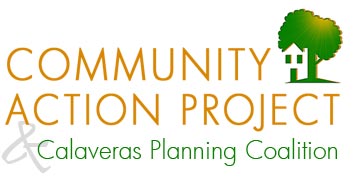project focused on sustainable land use planning.
Find out more about us >>
EPA Puts Tuolumne, Stanislaus on List of Polluted Waterways
| Portions of the Tuolumne, Stanislaus and Merced rivers have been added to a list of polluted California waterways.
The Environmental Protection Agency on Tuesday announced the rivers’ inclusion on its list of “California Impaired Waters,” making the determination based on high water temperatures, an indication of poor water quality. The report focused on 24 California waterways — portions of creeks and rivers — including the Lower Tuolumne River (from Don Pedro Reservoir to the San Joaquin River), the San Joaquin River (from the Merced to the Tuolumne River) and the Stanislaus River to the Delta boundary. Tuolumne River Trust Executive Director Eric Wesselman blamed the findings on too much water being diverted to the Bay Area, which he said harms water quality and salmon populations. “The lower Tuolumne River becomes a stagnant body of water in the summer where it cooks under the Central Valley sun along with anything trying to live in it,” he said in a prepared statement. “It stagnates because the irrigation districts and San Francisco divert more than half of the river and they just announced plans that could take even more,” he said, referring to the Modesto Irrigation District’s negotiating a possible sale of water to the city and county of San Francisco. More of California’s waterways are impaired than previously known, according to a list of polluted waterways finalized by the EPA. Increased water monitoring tests have shown the number of rivers, streams and lakes showing signs of toxicity has increased 170 percent from 2006 to 2010. The state has 3 million surface-acres of lakes, bays wetlands and estuaries, with more than half failing to meet water quality goals and 1.4 million acres in need of pollution cleanup, according to the EPA report. “California had done an excellent job of increasing the amount of water monitored,” EPA Administrator Jared Blumenfeld said in a prepared statement. “Unfortunately, much of the new data points in the wrong direction. This list of impaired waters is a wake-up call to continue the critical local and statewide work needed to heal California’s damaged waters.” The list of impaired waters was based on new, more-comprehensive research than had been gathered in the past, the EPA said. The report found that bacteria reached unsafe levels for swimming along many more beaches than expected in 2010. In addition, the amount of pollutants found in fish rose 24 percent from 2006 to 2010, with the greatest increase in mercury levels. The level of toxins would make the fish unsafe for human consumption. Waterways found to be impaired by pesticides showed a 36 percent increase from the prior list, likely as a result of the more thorough monitoring required under the state’s Irrigated Lands Regulatory Program. On the positive side, the study found that DDT levels are slowly decreasing due to the outlaw of its manufacture. For a full list of impacted waterways in the region, visit the EPA website www. epa.gov/ region9/mediacenter/impaired-waters. |

